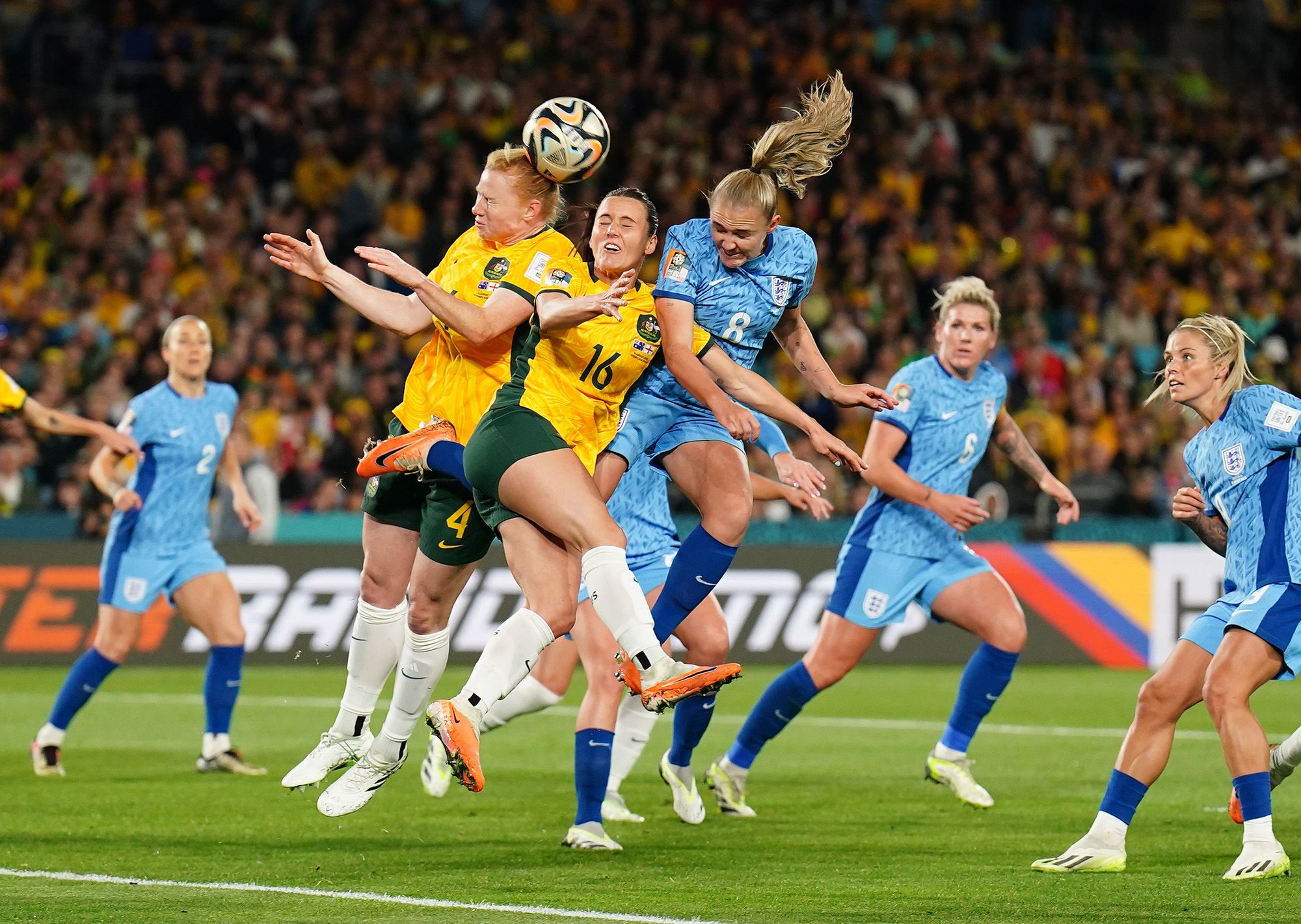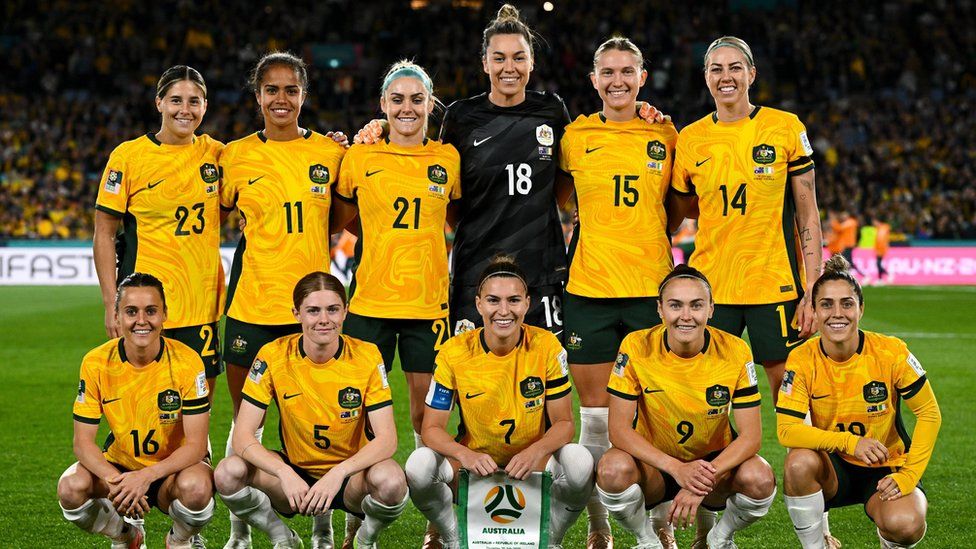
The showdown between the Australia women’s national football team vs england women’s national football team timeline in the Women’s World Cup 2023 was a spectacle of skill, resilience, and historic milestones. This timeline chronicles the key moments, pivotal plays, and remarkable achievements that defined this epic encounter, weaving together a narrative that captures the essence of this unforgettable match.
Early Anticipation and Build-Up
The excitement leading up to the match between the Australia Women’s National Football Team and the England Women’s National Football Team was palpable. As both teams prepared for their semifinal clash on August 16, 2023, at Stadium Australia in Sydney, fans and pundits alike were abuzz with predictions and analyses. The atmosphere in Sydney was electric, with supporters from both nations arriving in droves to witness this highly anticipated contest. The media coverage was extensive, highlighting the strengths and weaknesses of both squads. Gritty performances and standout moments marked Australia’s journey to the semifinals, while tactical brilliance and sheer determination defined England’s path. As the match day approached, the excitement reached fever pitch, setting the stage for a historic showdown.
The opening whistle and early exchanges
When the referee blew the opening whistle, the intensity on the field was immediately apparent. Both teams started with high energy, showcasing their tactical preparations and determination to gain an early advantage. The Australia Women’s National Football Team, buoyed by their home crowd, pushed forward aggressively, attempting to unsettle the English defense. On the other hand, the England Women’s National Football Team displayed composure and discipline, patiently building their attacks and probing the Australian backline. Sharp passes, tactical fouls, and near misses marked the early exchanges, with neither team willing to give an inch. The midfield battle was particularly intense, as both sides vied for control and sought to impose their game plans.
England’s first breakthrough
At 36 minutes into the match, England found their breakthrough. Ella Toone, demonstrating exceptional skill and precision, scored a superb goal that silenced the home crowd momentarily. This goal was a testament to England’s tactical acumen and Toone’s individual brilliance. The Australian goalkeeper had little chance to react after her perfectly placed strike. This moment was a significant psychological boost for the England Women’s National Football Team, giving them a crucial lead and putting pressure on the Australians to respond. The goal also underscored England’s ability to capitalize on their chances, a trait that would prove decisive as the match progressed.
Australia’s Response and Equalizer
The Australia Women’s National Football Team, undeterred by England’s lead, came out in the second half with renewed vigor and determination. The crowd’s support played a crucial role in lifting the team’s spirits, and their efforts soon paid off. Sam Kerr, Australia’s star forward, delivered a stunning equalizer that sent the stadium into a frenzy. Her goal was to be a masterclass in skill and poise, showcasing her ability to perform under pressure. Kerr’s equalizer not only leveled the score but also reignited the home team’s hopes and set the stage for a thrilling second half. The match was now finely balanced, with both teams pushing hard for the decisive goal.
England’s resilience and tactical adjustments
As the match entered its latter stages, the England Women’s National Football Team demonstrated remarkable resilience and tactical flexibility. Recognizing the need to regain control, they made crucial adjustments to their formation and strategy. These changes paid off in the 71st minute, when Lauren Hemp restored England’s lead with a decisive goal. Hemp’s strike was a product of excellent teamwork and precise execution, underscoring England’s tactical nous. This goal shifted the momentum back in England’s favor and placed immense pressure on Australia to find another equalizer. England’s ability to adapt and respond to the evolving dynamics of the match was a key factor in their eventual success.

Alessia Russo seals victory
In the 86th minute, Alessia Russo put the final nail in Australia’s coffin with a well-taken goal that sealed the victory for England. Russo’s goal was the culmination of a well-orchestrated attack, highlighting England’s offensive prowess and clinical finishing. This goal effectively ended Australia’s hopes of a comeback and confirmed England’s place in the Women’s World Cup final. Russo’s contribution was a fitting end to a match that had been defined by tactical battles, individual brilliance, and moments of high drama. Her goal was a testament to England’s depth and the team’s collective effort.
Defensive Masterclass and Game Management
Throughout the match, England’s defensive unit put on a masterclass in game management and tactical discipline. Despite Australia’s relentless attacks, the English defense held firm, making crucial interceptions and clearances. The coordination between the defenders and the goalkeeper was impeccable, ensuring that Australia found it difficult to create clear-cut chances. This defensive solidity was a cornerstone of England’s strategy, allowing them to absorb pressure and launch counter-attacks effectively. The ability to maintain composure under pressure was a key factor in their victory, highlighting the importance of a well-organized defense in high-stakes matches.
Australia’s spirited effort
Despite the loss, the Australia Women’s National Football Team displayed immense character and fighting spirit throughout the match. Memorable performances and remarkable resilience marked their journey to the semifinals, and their semifinal performance was no different. The players gave their all, pushing England to their limits and showcasing the progress Australian women’s football has made. Sam Kerr’s goal was a highlight, reflecting her status as one of the world’s top players. The team’s effort, passion, and determination were evident, earning them admiration and respect from fans and pundits alike.
Tactical battles and coaching strategies
The tactical battle between the two teams was fascinating to watch. Both coaches employed different strategies to outwit their opponents, making for a gripping contest. England’s coach focused on a balanced approach, blending defensive solidity with swift counter-attacks. This strategy allowed England to control the game’s tempo and exploit spaces in the Australian defense. Meanwhile, Australia’s coach emphasized high pressing and quick transitions, aiming to disrupt England’s buildup play and create scoring opportunities. Throughout the match, both coaches made tactical adjustments that highlighted their tactical acumen and the importance of in-game management.
Midfield Battle and Key Players
The midfield battle was a crucial aspect of the match, with both teams fighting hard for control in this area. England’s midfielders played a pivotal role in linking defense and attack, maintaining possession, and distributing the ball efficiently. Their ability to break up Australian attacks and initiate counter-assaults was instrumental in England’s success. On the other hand, Australia’s midfielders showcased their tenacity and creativity, attempting to break through England’s defensive lines. Key players from both teams stepped up, delivering standout performances that kept the match evenly poised and exciting for the fans.
The Role of the Home Crowd
The home crowd at Stadium Australia played a significant role in creating a charged atmosphere that fueled the Australian players. The support from the stands provided a psychological boost, especially during moments when the team needed to rally. The fans’ unwavering support was a testament to their passion for Australian women’s football and pride in their national team. While the result was not in their favor, the crowd’s energy and encouragement were invaluable, contributing to the overall spectacle of the match.
Historic Significance of the Match
This semifinal match held significant historical importance for both teams. For England, reaching their first Women’s World Cup final was a monumental achievement, ending a long wait since 1966 for an English team to appear in a World Cup final. This victory was a testament to the progress and development of women’s football in England, highlighting the team’s dedication and hard work. The match was a showcase of Australia’s growth as a footballing nation and its potential to compete at the highest level. The performance of the Australian team in this tournament will undoubtedly inspire future generations of players.
Media Coverage and Global Impact
The match between the Australia Women’s National Football Team and the England Women’s National Football Team garnered extensive media coverage globally. The thrilling nature of the game, combined with its historical significance, captured the attention of football fans worldwide. Media outlets provided in-depth analyses, highlighting key moments, player performances, and tactical insights. This match had a significant global impact, as it raised the profile of women’s football and demonstrated the sport’s growing popularity and competitiveness.

Post-Match Reactions and Analysis
The post-match reactions from players, coaches, and pundits offered valuable insights into the match’s dynamics. England’s coach praised the team’s resilience and tactical execution, while the players expressed their joy and pride in reaching the final. Australia’s coach and players reflected on their journey and the positive aspects of their performance, despite the disappointment of the loss. Pundits analyzed the key moments and tactical decisions that influenced the outcome, providing a deeper understanding of the match’s intricacies.
Looking Ahead
With their victory, the England Women’s National Football Team looked ahead to the final with optimism and determination. The team’s focus shifted to preparing for the ultimate challenge and aiming to lift the World Cup trophy. For Australia, the focus was on building on their achievements and continuing their development as a formidable force in women’s football. The lessons learned from this match, as well as the overall tournament experience, will be critical in shaping their future prospects and aspirations.
Celebrating Women’s Football
The match between the Australia Women’s National Football Team and the England Women’s National Football Team was a celebration of women’s football and its remarkable progress. The high level of skill, tactical acumen, and sportsmanship displayed by both teams underscored the quality and competitiveness of the women’s game. This match was a testament to the hard work, dedication, and passion of the players, coaches, and supporters who have contributed to the growth of women’s football. As the sport continues to evolve, such memorable matches will inspire future generations and elevate the status of women’s football on the global stage.
Conclusion
One of the most thrilling and significant matches in the history of the Women’s World Cup was the semifinal clash between the Australia women’s national football team vs england women’s national football team timeline. From the early anticipation and build-up to the final whistle, the match was a showcase of skill, resilience, and tactical brilliance. England’s victory and progression to the final marked a historic moment for English football, while Australia’s spirited effort earned them admiration and respect. This match not only provided unforgettable moments for fans but also highlighted the growth and potential of women’s football.
Read Also: Dallas mavericks vs boston celtics match player stats
